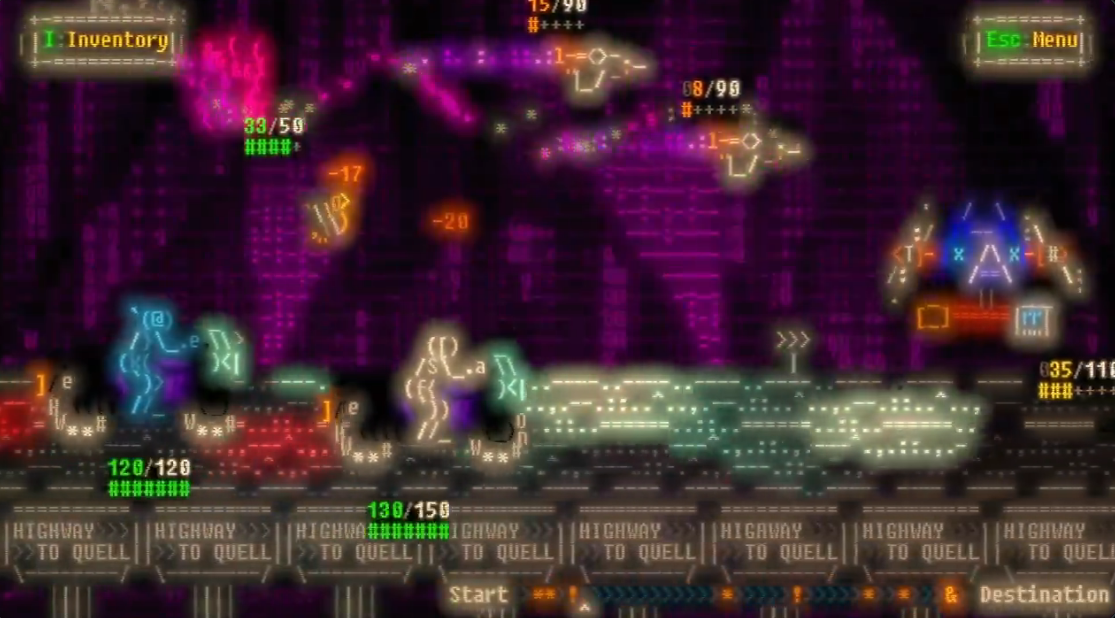Plein air painting goes digital: how artists are using portable tech to paint in the great outdoors
Top tips from five pro concept artists.

Art has always been shaped by the evolving relationship between creative vision and technology. Today, artists eagerly line up for the latest iPad Pro or try out spatial computing headsets like the Apple Vision Pro just as painters nearly 200 years ago embraced the invention of the paint tube, and the Old Masters used optical aids like the camera obscura to refine their work.
Once again, we’re seeing a shift: a new chapter in the partnership between an artist’s imagination and the tools that help bring it to life. With technology now more powerful, portable and intuitive than ever, a growing number of digital artists are venturing beyond the confines of their studios.
Just as Monet and his contemporaries stepped outside to capture fleeting light and atmosphere, today's creators are doing the same with tablets in hand – devices like the best iPads for art or the pen computers in our guide to the best drawing tablets.
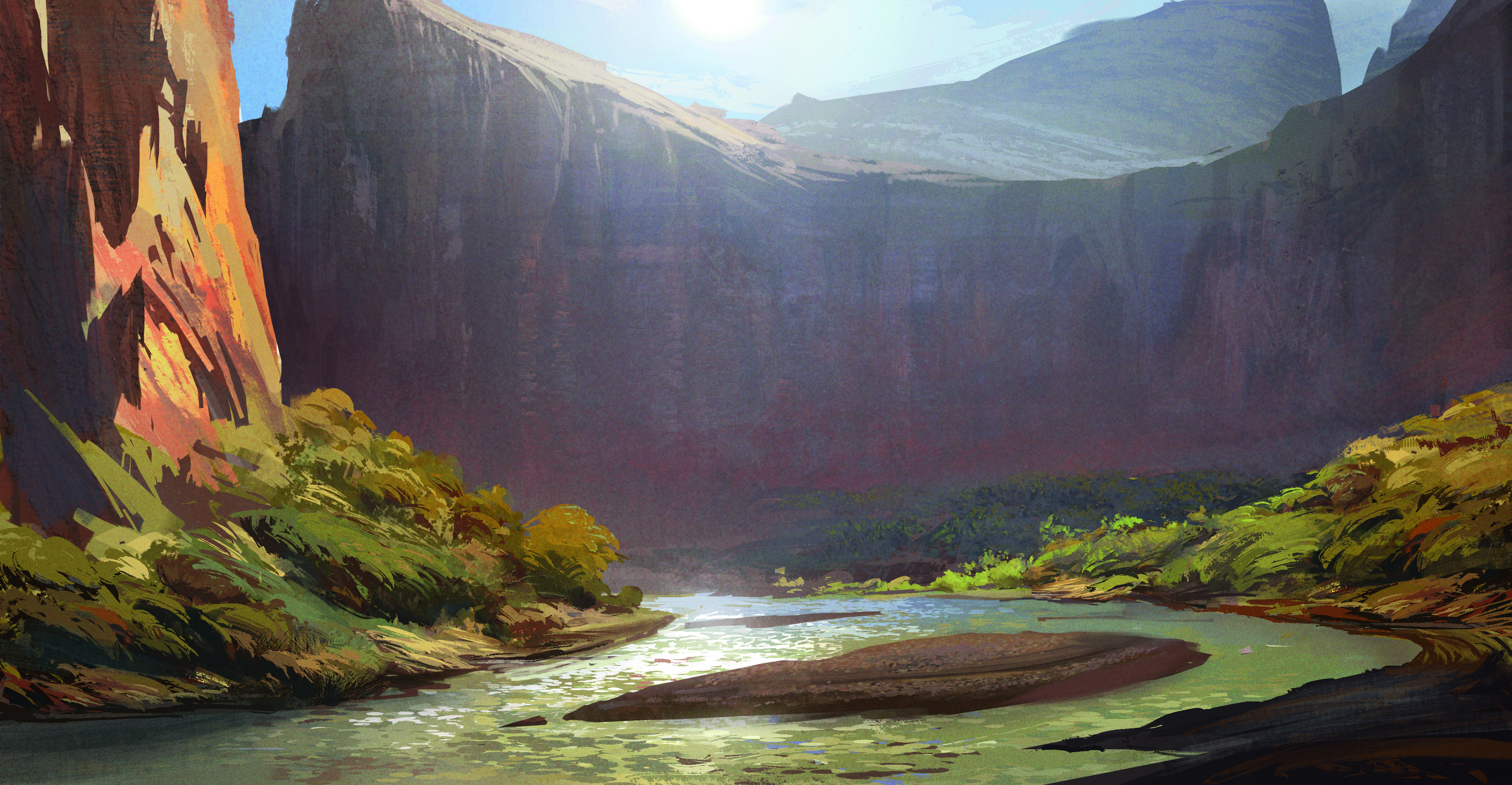
Digital plein air painting invites artists to step away from their desktop screens and reconnect with outdoor settings. With battery life and the best digital art software or the best drawing apps for iPad catching up with artistic ambition, the digital studio is now truly mobile.
We spoke to a selection of well-known concept artists to learn more about the tools they use and how they set themselves up for digital plein air painting.
Tools of the trade for digital plein air painting
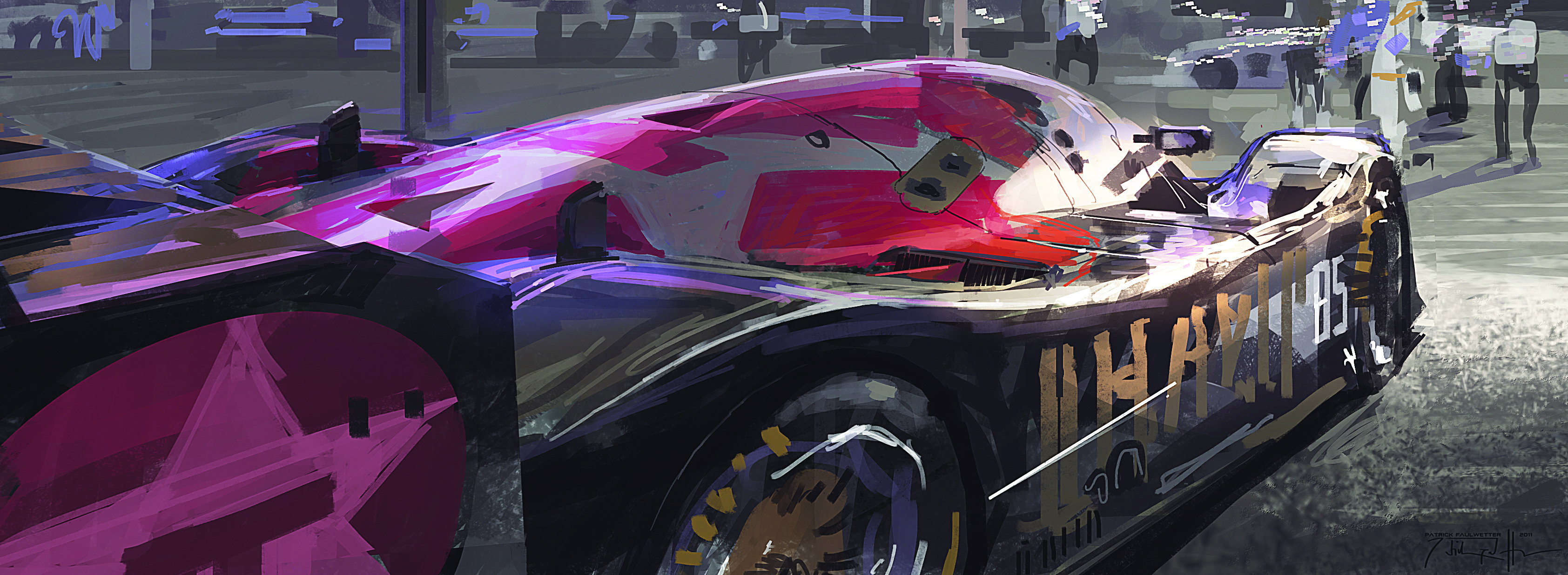
There are a couple of ways you can approach a setup for digital plein air painting. The simplest is to use a pen computer like an iPad, Samsung Galaxy Tab or one of the models from a dedicated drawing tablet brand. The other option is to use a traditional drawing tablet, be it a pen display or a pen tablet with no display, and to connect it to a lightweight laptop. This more cumbersome, but it has some benefits.
Concept artist Patrick Faulwetter, who has been digital plein air painting for years, prefers this latter setup. He uses a MacBook and a Wacom tablet, preferring this to a tablet computer because his laptop has a matte finish: “This avoids reflecting surrounding light, and I can use hotkeys too, mainly for brush size," he says.
Daily design news, reviews, how-tos and more, as picked by the editors.
“Using a tablet would look much more elegant than using a laptop. Maybe people wouldn’t ask me what I’m doing all the time, sitting in the middle of nowhere with my laptop.”
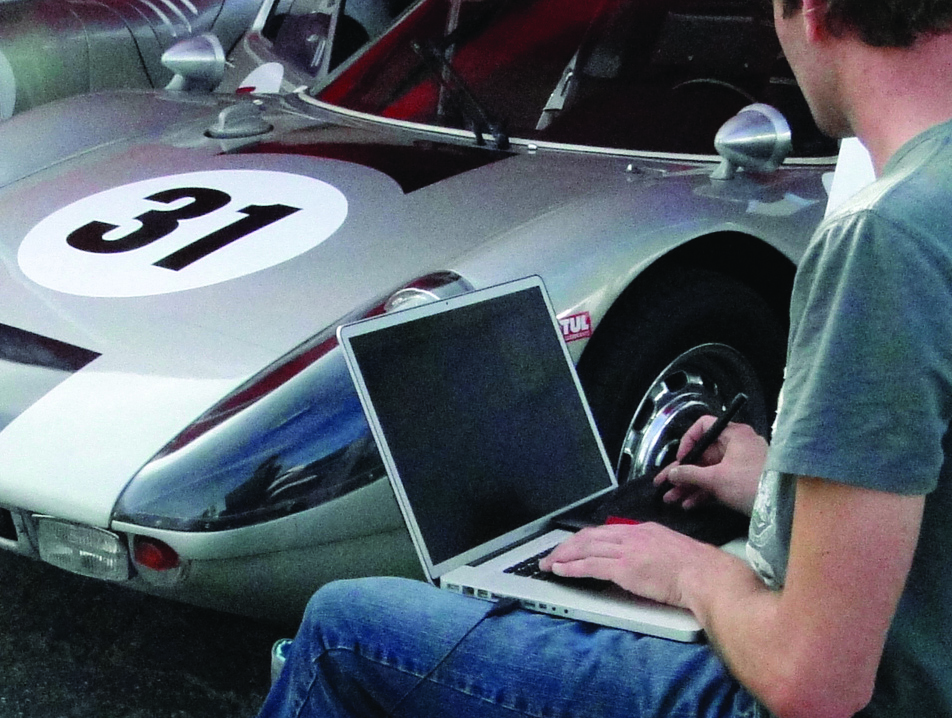
Concept artist Nick Gindraux takes a Wacom Intuos medium on his travels because the tablet’s Quick Keys and Touch Strip enables him to access brush sizes – something useful that’s lacking on the more mobile iPad.
Conversely, Robh Ruppel is an advocate of the iPad and treats the device like a portable easel. Using a standard camera tripod, Robh mounts his iPad and paints in a traditional manner.

“For me, the iPhone and then the iPad were the biggest leaps forward because they enabled me to work site to size, which means you’re reproducing the visual impression as closely as possible by keeping the proportions of what you’re painting the same as the scene.”
This ‘one-to-one’ painting, used by traditional artists like John Singer Sargent, enables you to flick your eyes from the screen to the scene and back again quickly. Working this way means you can “make direct comparisons between shape and value,” explains Robh.
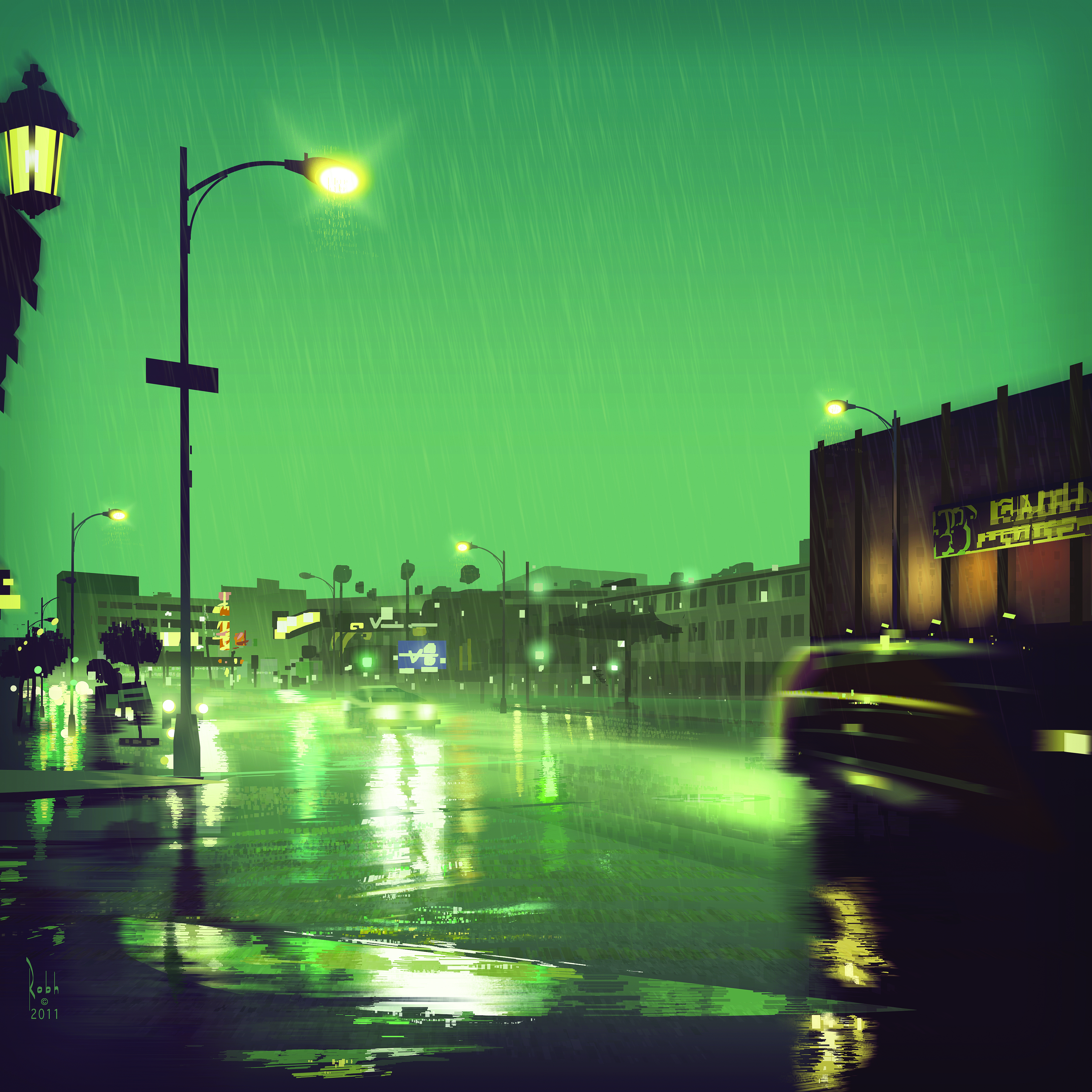
There’s a direct link between digital plein air painting and its traditional counterpart. While technology enables new approaches, styles, access and uses of the final painting, the process of an artist interpreting their surroundings is as alive now, as it was when The Impressionists took to the streets of Paris.
Likewise, this new ‘digital impressionism’ is equally immediate and emotional, “I believe this new style is an art form unto itself,” says Nick Pugh, who has taught digital landscape painting at Art Center in Pasadena, US.
The same but different
“It’s similar to traditional painting because it’s the artist’s hand that creates the image, but it’s similar to photography because there’s a technical device between the subject and the creator,” explains Nick. “This new art form is in its early stages of development, similar to where photography was in the early 20th century.”
Clearly the technology itself can cause problems, such as limited battery life, screen glare and the logistical hurdles of packing laptops, tablets and other tools for a day’s digital painting. And you need to contend with the environment, the heat, the cold, bugs, wind, tides and tiredness.
“Once you’ve crossed that hump, gotten your composition down and stopped to look around,” says Shaddy Safadi, co-founder of One Pixel Brush, a concept firm headquartered in Santa Monica, “you realise it’s a badass way for nerds to get away from the desk!”
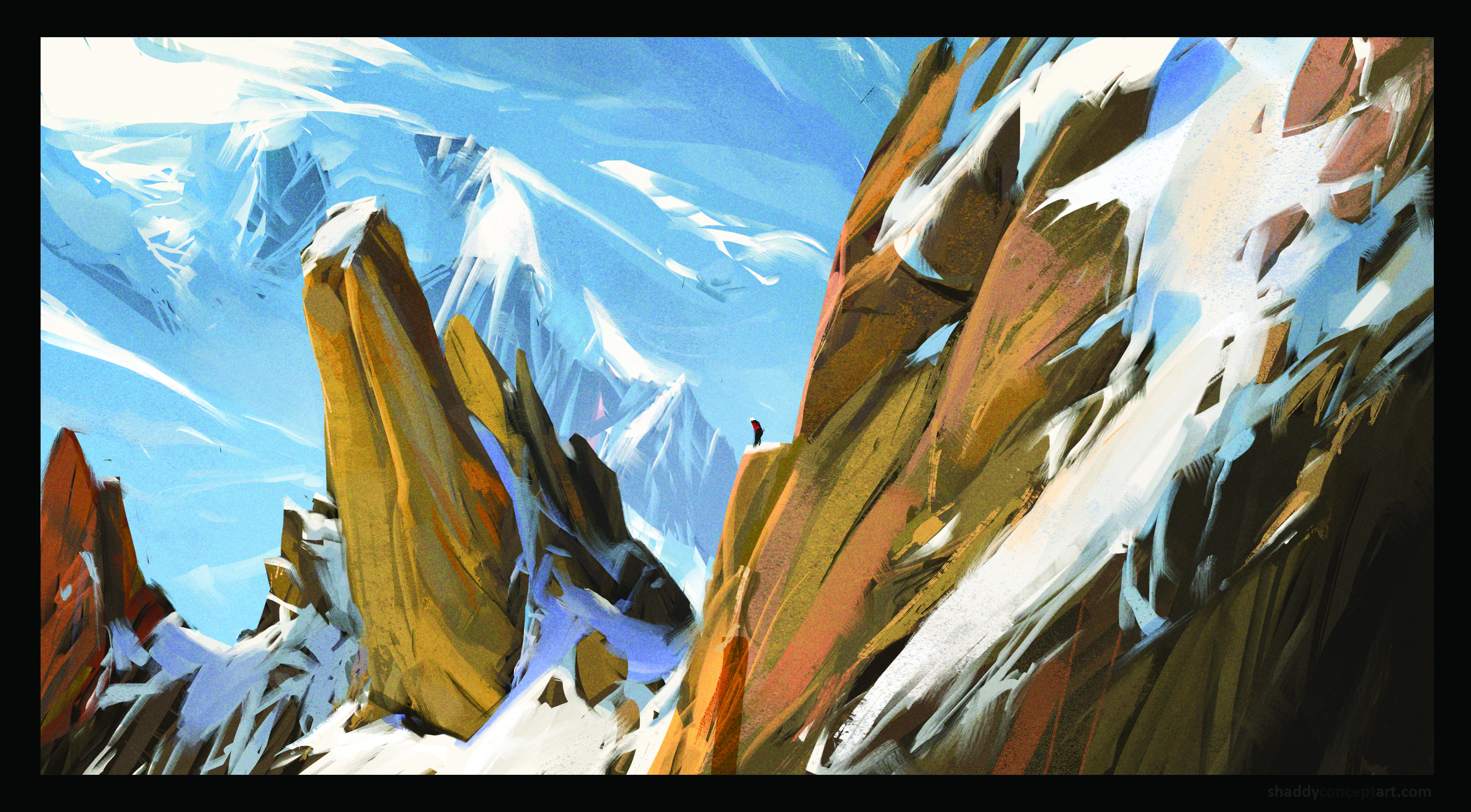
It teaches me the pure process of painting. The resulting art feels more natural than painting in the studio
Robh Ruppel
The artistic rewards of connecting with the subject matter is forcing artists to come up with ways to overcome the problems of dragging a digital setup outside. While some are simple – “I wear black to prevent screen glare,” says Nick – others’ solutions are more complex.
Shaddy has designed a simple cardboard shade box that fits over the screen like an old photographer’s hood to stave off screen glare. Overriding all the hurdles is the desire to reconnect with art fundamentals. Famously, Howard Pyle made his students stand in a cold stream to paint ‘cold’, and now digital artists are putting themselves through a similar test.
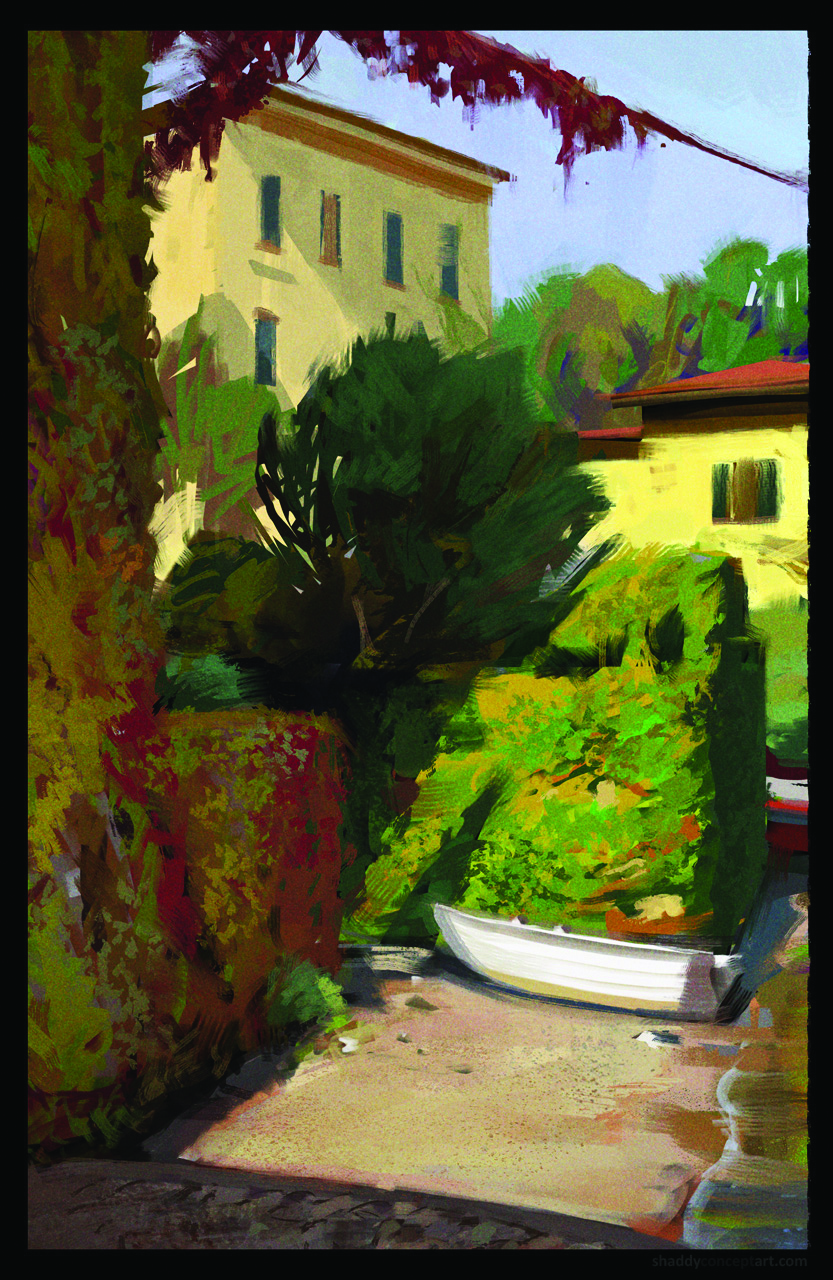
“It’s important to be on location to ‘feel’ the environment, atmosphere and the subtleties in colour,” says Patrick, who’s endured sandstorms, tropical thunderstorms and more to paint digital landscapes. A solution Patrick’s discovered is to turn his attention to large designed spaces: airports, hotels and shopping malls.
“Painting these places helps me understand how they were designed,” he says. “Sometimes it feels more challenging than landscapes, because the design logic behind the space keeps me away from just thinking in terms of palette and composition.”
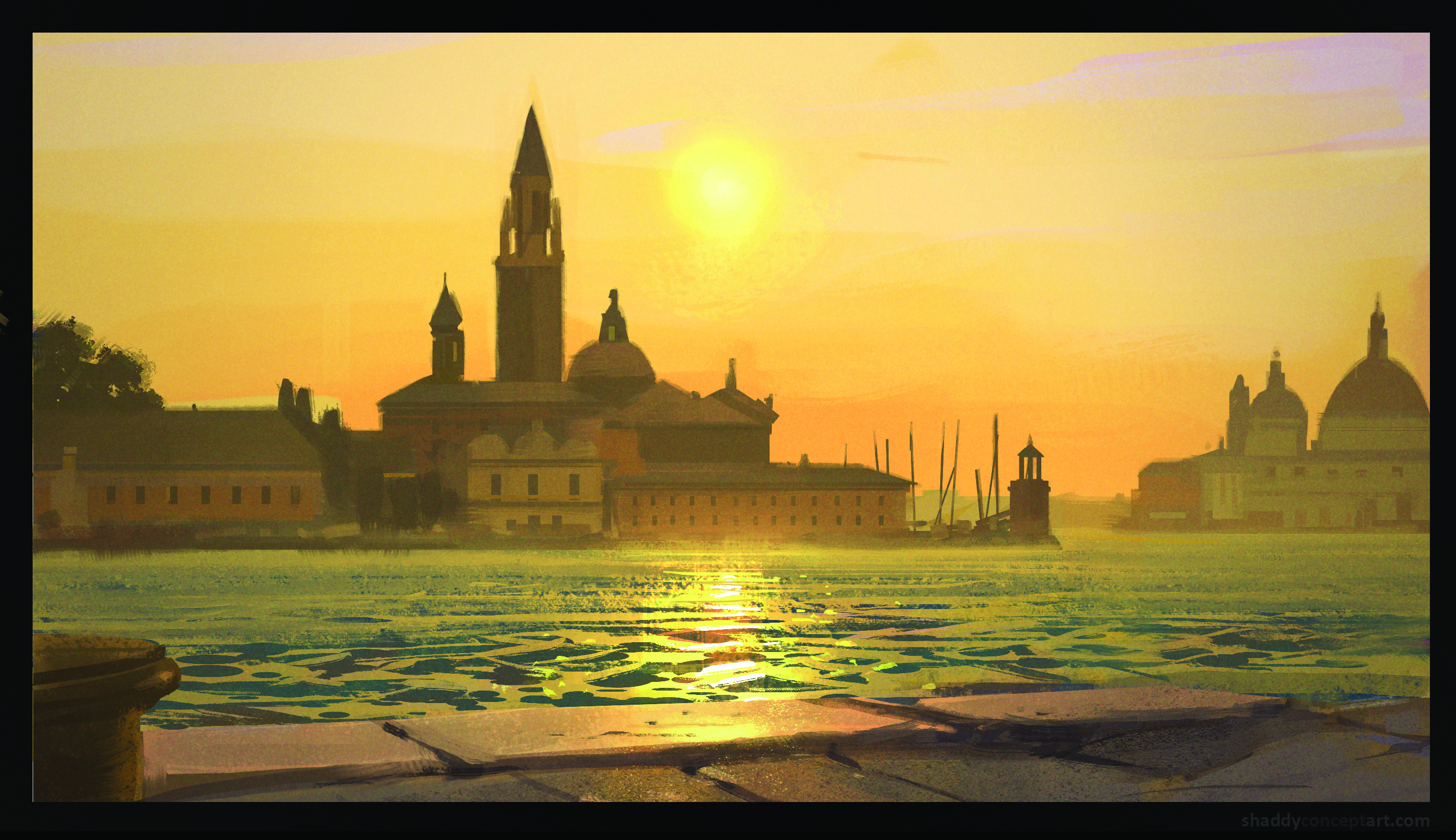
Every artist looks for something different in whatever they’re painting. Robh says he looks for something that moves him, but over the years his interpretation of what he sees has changed. When he began painting he would use many brushes and layers.
“But lately I’ve wanted to get to the essence of the visual impression with the simplest tools possible,” says Robh, who now uses just the Square tool, a Square brush, Line tool and a few gradients. “I redesign/ simplify shapes, producing a graphic approximation of what I’m seeing rather than a naturalistic translation.”
Be here now
Similarly Nick is attracted by the immediacy and purity of painting digitally outdoors. “I like to heighten the feeling of ‘being there’ by using exaggerated or distorted shapes and colours,” he says. “I like to play with scale and composition.” Patrick has also found the speed and immediacy of painting digital plein air has affected his process.
When painting outdoors he limits his workflow to two or three brushes and uses just a few layers. Ironically, for an artist who never painted traditionally, as his technique gets simpler and more focused his digital painting process is becoming more traditional. “It teaches me the pure process of painting,” he says.
“It’s just about observing and putting down colours. Outside I always see new interesting things, such as lighting scenarios, colour combinations and value patterns, which I can save in my mind. I recall and integrate these in my work.”
While digital art tools have always enabled artists to take their work to a polished level, the act of plein air painting has the opposite effect. “It’s fascinating to see roughness instead of definition in pixels,” says Patrick, who now looks to paintings that define space, light and mood with limited brushstrokes.
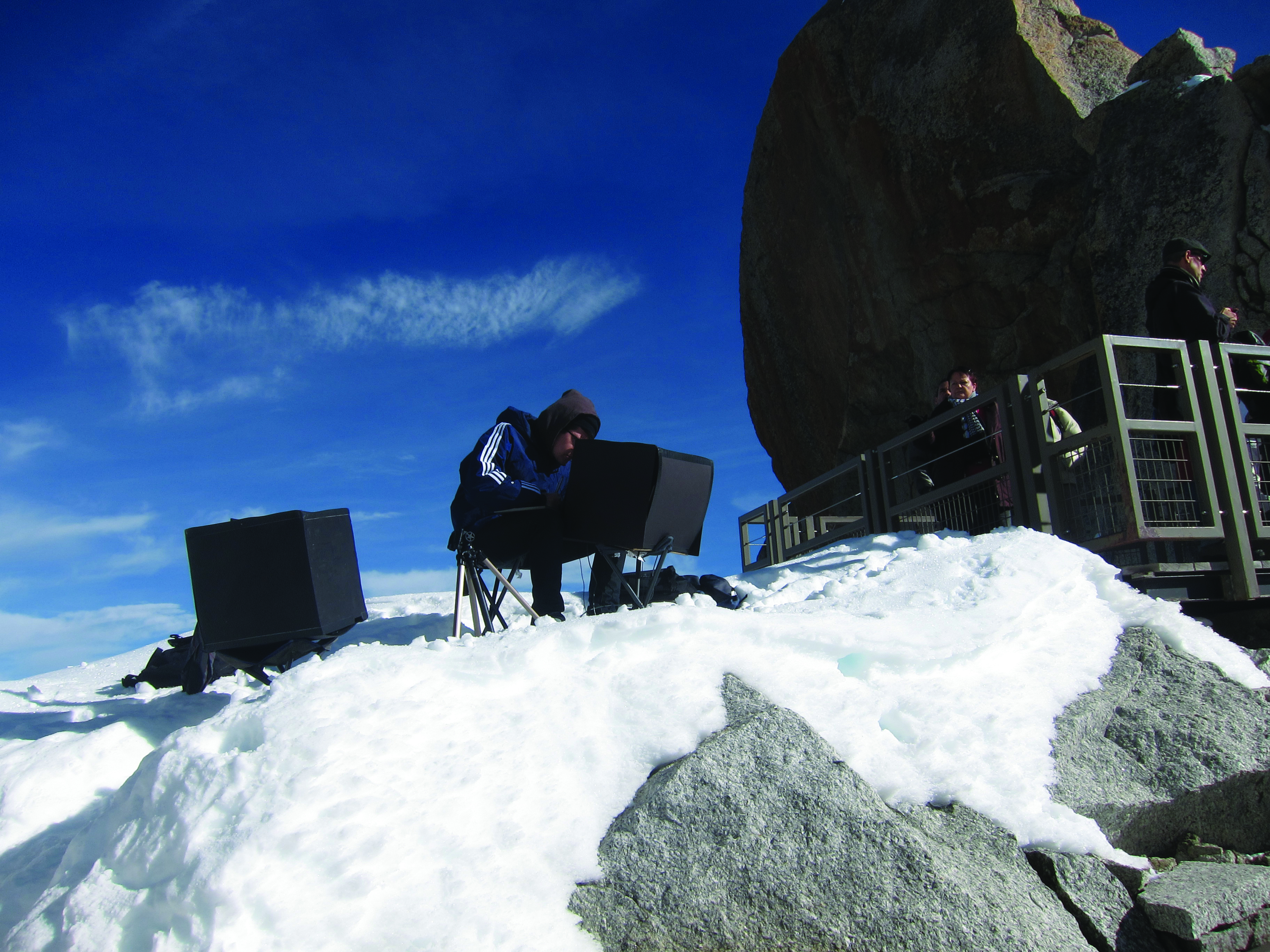
“There can be a freshness to mark-making and colour in digital painting that surpasses traditional in some ways,” says Shaddy. “Technology doesn’t change art that much because the human eye just wants beauty.”
While the technology enables artists to customise tools to form expression in a unique, fast and emotional way, artistic vision is needed to edit out what’s in front of the painter. Digital plein air painting is a new art form that enables artists to push shapes for artistic effect. “When we’re out there we’re observing and replicating colour, colour relativity, lighting scenarios, atmosphere and texture,” says Eytan Zana, a member of the Digital Plein Air Society.
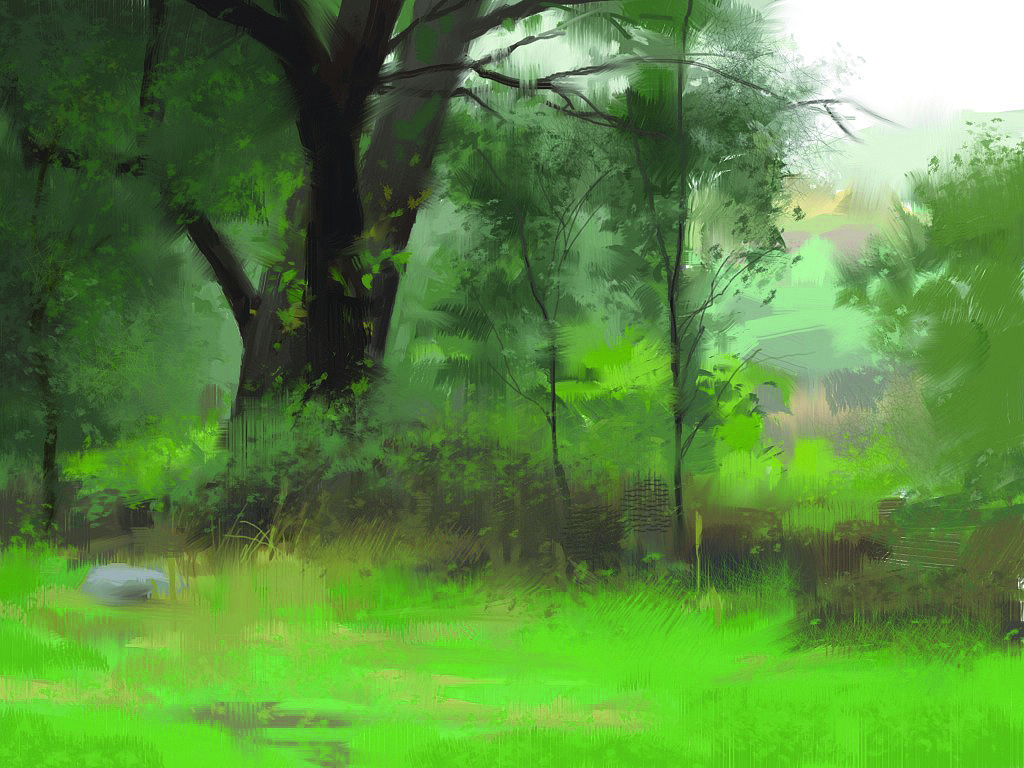
“Most importantly we’re stylising, exaggerating and organising what nature has given us into a compelling composition.” Just as technology is enabling digital artists to connect with traditional, observational painting, traditional artists are connecting with the technology.
David Hockney, one of England’s greatest modern artists, has adopted the iPad into his workflow. He carries the tablet with him and paints daily on the device. He stylises and paints symbolically, combining his digital and studio painting to find the ‘bigger picture’ in traditional landscape painting. Likewise, digital artists are finding the excursions away from the studio are reaping rewards.
While Patrick has found “painting architecture completes the loop to my concept art and design background,” Shaddy expresses a similar desire to link all facets of his art. “I don’t want to be that artist who does their day job, all the while thinking there’s this other work he really wants to do. I want it all to be connected.” This linkage between artistic vision and technology is at the heart of plein air.

Those digital artists that take their tools outside are relearning to observe the world, to paint light and shadow in exciting ways, to interpret colour, to edit and exaggerate and establish new puritan processes that eventually seep into their imaginative art.
“The more people take up this style, the more chances there will be for the creation of masterpiece-quality work. There’ll be a great artistic evolution coming in the future with this technique,” says Nick, who looks forward to a time when digital art is hung in galleries and cherished by collectors. The journey begins at your front door.
Nick Pugh on digital plein air challenges, techniques and future
Nick Pugh has taught digital landscape painting at Art Center, CA, and wrote Luminair, the first book on the subject, in 2006. He is Creative Director at Nick Pugh Studio.
CB: What’s the biggest challenge for digital plein air painting?
NP: Aside from glare and reflections on the screen, the hardest part is bringing emotion and originality into the work. Many people can paint what they see, but it often looks similar.
CB: So how do you set your work apart? Any technique advice?
NP: For architecture, I tend to sketch in the perspective with lines, then fill in the spaces afterwards. For landscapes I like to block in forms with large swaths of colour and value before I hit the details.
CB: What’s the future of digital plein air painting?
NP: I want a new type of screen with a bright coloured opaque surface that looks best in bright sunlight. E-ink and Kindle have sort of done this, but the quality isn’t there yet. The other big issue is the final image as a printed art piece.
These days we can print on all kinds of medium, but it doesn’t compare to the visceral value of a real oil painting. The texture, colour density and depth are more compelling in original art seen in a physical form. I could imagine futuristic technologies that print digital paintings using thick paint and some sort of a robotic ‘painter’.
Or imagine a device that’s a ‘wet’ print surface and the wet paint catalyses into a hard sheet that you can peel off as an original piece. Or we could work with the inherent ephemeral qualities of the medium as a digital-only form and find ways to present and sell the art on screen.
Digital plein air brush tips from Shaddy Safadi
- Work no bigger than 3,000 pixels wide, so that a complex 600 pixel wide brush can refresh immediately and smoothly.
- Turn off Open GL in preferences and restart Photoshop. This makes your laptop faster (you won’t miss Zoom and Drop Shadow).
- Older, slower laptops are fine – brush refresh in Photoshop is all that matters
For more inspiration, see our plein air painting tips for traditional outdoor painting and our piece on how to create digital plein air paintings using Procreate and iPad.

Ian Dean is Editor, Digital Arts & 3D at Creative Bloq, and the former editor of many leading magazines. These titles included ImagineFX, 3D World and video game titles Play and Official PlayStation Magazine. Ian launched Xbox magazine X360 and edited PlayStation World. For Creative Bloq, Ian combines his experiences to bring the latest news on digital art, VFX and video games and tech, and in his spare time he doodles in Procreate, ArtRage, and Rebelle while finding time to play Xbox and PS5.
- Kulsoom MiddletonFreelance writer
You must confirm your public display name before commenting
Please logout and then login again, you will then be prompted to enter your display name.
